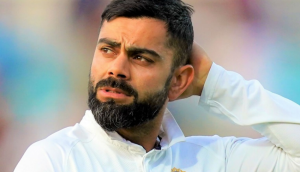Not the finest India-Australia series ever, but kudos to Kohli's boys

The temptation to join the growing chorus of hype is easy to resist when it is tempered by an awareness of the past.
Indeed, the cricket in the four-Test series between India and Australia for the Border-Gavaskar Trophy was riveting. The competition between the two teams was praiseworthy. But even a cursory recall of history will ensure that we stay grounded.
Some have called it the most competitive series between the two nations, but that is forgetting 2001, when India lost the opening game in Mumbai and were asked to follow-on at the Eden Gardens. VVS Laxman and Rahul Dravid scripted a famous partnership and Harbhajan Singh bowled India to an improbable victory. And in Chennai, India scampered to a two-wicket win.
Positives for Aussies
One of the reasons why the just-ended series has drawn praise is Australia's ability to punch above their weight. It is to the credit of Steve Smith’s team that it competed so hard nearly throughout the four Tests. For a team whose predecessors bit the dust in India on each of their last four visits to be scrapping ceaselessly created an illusion that the series was the finest between the two sides.
Barring the prolific Smith and the strapping opener Matt Renshaw, Australia's batsmen were largely ill at ease. Off-spinner Nathan Lyon bowled with guile and venom, but once left-arm spinner Steven O'Keefe had been mastered, Australia's bowlers were, at best, game triers. We have seen better squads representing Australia before.
A quick word on the four Tests before we focus on the Indian team itself. If the undercooked India were surprised by the Australian spinners on the dustbowl in Pune at the start, things ended with Australia being stumped on a track in Dharamsala where the bounce was not quite of the sub-continental variety.
These Tests sandwiched two intense battles, first in Bengaluru, where India made light of an 85-run first innings deficit to get their nose ahead and secure a 76-run verdict, and then in Ranchi, where, on the final day, Australian batsmen Shaun Marsh and Peter Handscomb stonewalled India's attempts to script a victory.
Pujara the man
India's batting had to make do without the typically meaty contributions from skipper Virat Kohli, but they still won the series. This will give the team more confidence that it has the wherewithal to battle even when its leader is searching for the batting form that saw him make a Test double century in each of the four series before this one.
Cheteshwar Pujara took enormous responsibility upon himself, first in a gritty partnership with an off-colour but fighting Ajinkya Rahane to turn the Bengaluru Test on its head, and then with a double century to let India sniff victory in Ranchi. KL Rahul stepped up the plate with six half-centuries in seven innings, even if he has yet to show that he puts a price on his wicket.
Without being his usual reliable self at the batting crease, Rahane and Wriddhiman Saha chipped in with useful contributions. Ravindra Jadeja came up with half-centuries his last two innings, the knock in Dharamsala ensuring that India would gain the lead, however small, and set the stage for the bowlers to deliver the knockout blow.
Bowlers were special
Indeed, India's bowling came into its own after Pune, where despite not letting Australia score 300 in either innings, the home team was handed a 333-run defeat. The attack responded remarkably to the challenge of having to provide cover to some inexplicable batting failures. And to do this with pace spearhead Mohammed Shami confined to the sidelines was quite special.
Off-spinner R Ashwin and left-arm spinner Jadeja were the cornerstones of the attack – and that was only to be expected at the end of a long home season. It was the accurate, probing, incisive and tireless pace bowling of paceman Umesh Yadav that warmed the cockles of many a heart. Young Kuldeep Yadav bowled a memorable spell of left-arm wrist spin in the final Test.
Bad blood
One of the disturbing features of the series was that each of the three new Test venues in Pune, Ranchi and Dharamsala did not draw the expected crowds to the fascinating battles. That kind of defeated the very purpose of taking Test cricket to new centres, in the hope that fans in these cities would lap up the opportunity to soak in the nuances of the wonderful contest called Test cricket.
Even the bad blood flowing quite freely did not draw more fans to these venues. There were words like 'brain-fade', and an imputation that the Australians had redefined DRS from Decision Review System to Dressing Room Review System. Some needle was expected, and perhaps acceptable, but the acrimony was needless, and took away some of the attention from the intense cricket on view.
Former players in both nations seemed to forget that they are no longer part of their respective cricket teams. Worse, instead of dousing the fire, official websites and broadcasters in the two nations kept fanning it. Indeed, the loss of balance extended beyond the boundary, and was one of the sore points that this series will be remembered for.
Sticking together
It is not worth lingering any longer on such issues and digressing from the cricket. That would be suffering from a brain fade of the worst order. India presented a countenance that advertised their intent clearly. It was a mix of the aggressive, ready to answer the sledging in a similar tone and tenor, and, above all, a desire to battle together – as a team – to achieve the common goal.
When Kohli and coach Anil Kumble look back at the series, they would be pleased with the fact that the Indian players enjoyed their cricket, responded to the pressure admirably, and celebrated the effort that each one made.
It really did not need the skipper to spell it out in clear terms after the turnaround in Bengaluru: “We shall lose together just as we shall win together,” he had said. And his boys did.
First published: 28 March 2017, 20:23 IST





![BJP's Kapil Mishra recreates Shankar Mahadevan’s ‘Breathless’ song to highlight Delhi pollution [WATCH] BJP's Kapil Mishra recreates Shankar Mahadevan’s ‘Breathless’ song to highlight Delhi pollution [WATCH]](https://images.catchnews.com/upload/2022/11/03/kapil-mishra_240884_300x172.png)

![Anupam Kher shares pictures of his toned body on 67th birthday [MUST SEE] Anupam Kher shares pictures of his toned body on 67th birthday [MUST SEE]](https://images.catchnews.com/upload/2022/03/07/Anupam_kher_231145_300x172.jpg)






